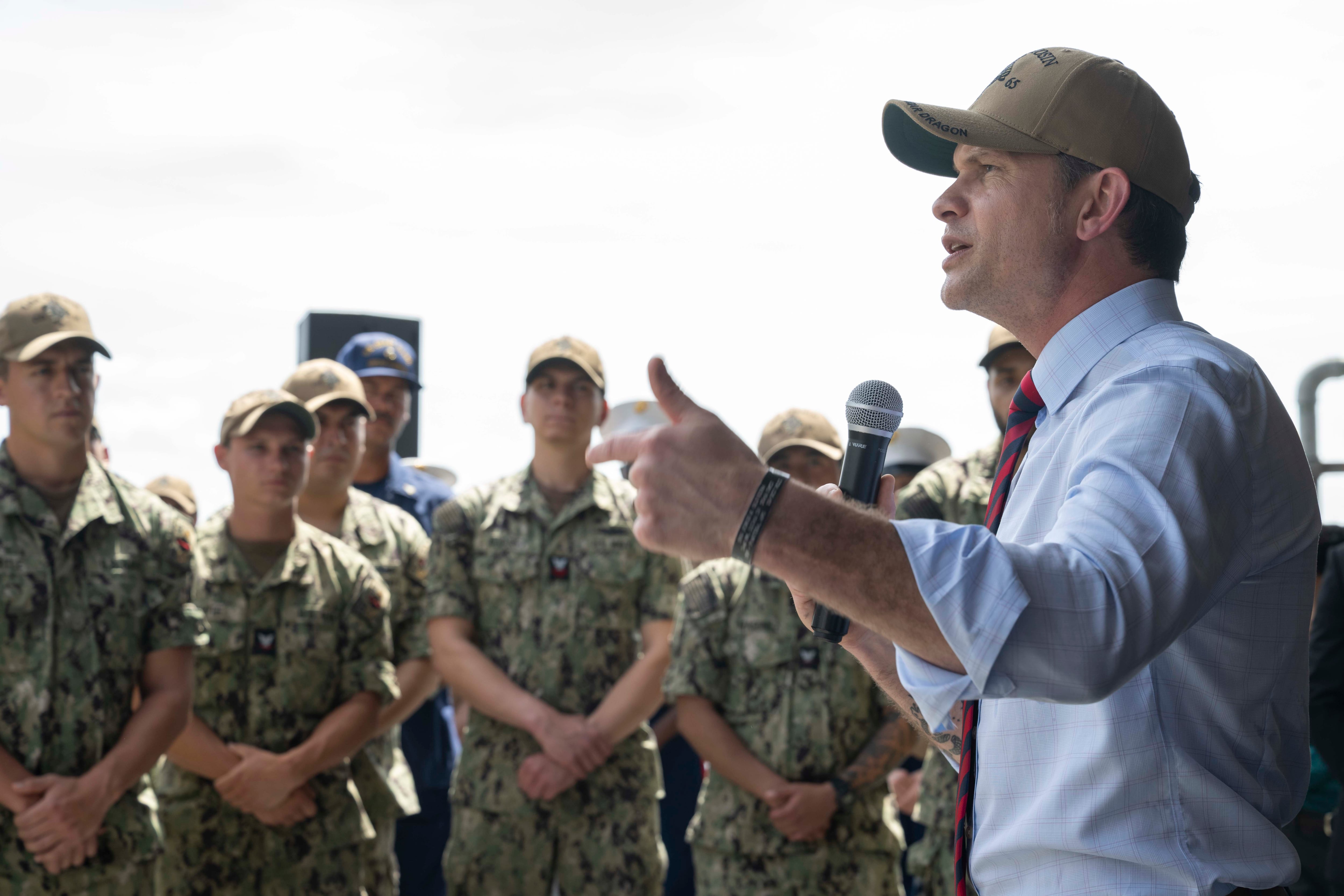ARLINGTON – This year, two Army IBCTs and a not-yet-disclosed Marine unit will be testing four variants of a load-bearing robot vehicle within the dismounted formation for the next year.
During a technology demonstration focusing on Secretary of Defense James Mattis’ push to make the close combat forces more lethal, officials with the Squad Multipurpose Equipment Transport showcased the four submissions.
U.S. Army Capt. Erika Hanson, assistant product manager for SMET at Program Executive Office Combat Support and Combat Service Support, said the vehicle is designed to take the burden off the soldier.
The Army’s 1st Infantry Brigade Combat Team, 10th Mountain Division, and the 1st Brigade Combat Team, 101st Airborne Division, have been chosen to test the vehicle. Officials disclosed this week that a Marine unit at Camp Lejeune, North Carolina, also will test the vehicles for the same period.
Each unit will get each of the variants to test, Hanson said.
Assessment began with evaluation of 10 systems at Fort Benning, which were narrowed down to four: the MRZR X, based off the Polaris MRZR, currently in service with the Marines; the General Dynamics 4x4 Multi-Utility Tactical Transport or MUTT; the Howe and Howe RS2-H and the HDT Global Hunter Wolf or Wheeled Offload Logistics Follower.
The MRZR X is a four-wheeled all-terrain vehicle; the MUTT is an eight-wheeled with a flatbed type of configuration. The Hunter WOLF is a six-wheeled vehicle that uses a morphed tire/track for traction; the RST2-H1 is the only tracked vehicle submission.
The testing moving forward is aimed at putting enough gear for a nine-soldier squad ― nine rucks, two fuel jugs, two water jugs and three days’ worth of Meals Ready to Eat ― and carry batteries and charge them while on mission.
The three basic requirements for the vehicles are to carry 1,000 pounds, travel 60 miles in 72 hours and charge up at a 3-kilowatt rate while stationary and 1-kilowatt rate while moving, said Greg Colvin, technology demonstration engineer for the SMET program.
All four can be operated with a one-handed remote control, Colvin said. Two can be driven through teleoperations or using non-line of sight maneuvering with onboard sensors and cameras.
The MRZR X is an “optionally manned” vehicle that can be driven either by a person in the vehicle or remotely controlled.
The vehicles will first stop at the Army Testing Command in June before being sent to the units in November for a year’s worth of testing, Colvin said.
Researchers will gather data and conduct interviews, providing quarterly reports on the use of the vehicles in the formations.
Following the year testing there will be an evaluation and potentially a down select to one vehicle, or a decision on whether one type of vehicle can fit all the squad load needs or if more than one type might be required.
Todd South has written about crime, courts, government and the military for multiple publications since 2004 and was named a 2014 Pulitzer finalist for a co-written project on witness intimidation. Todd is a Marine veteran of the Iraq War.




